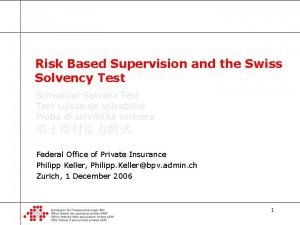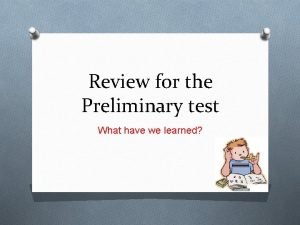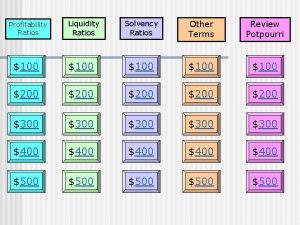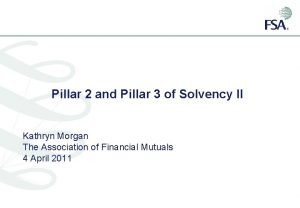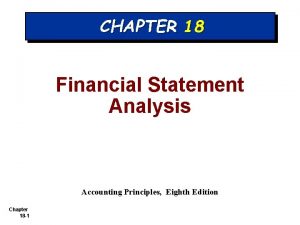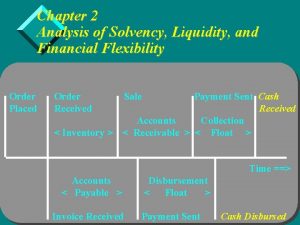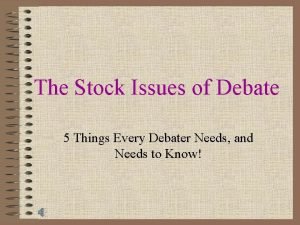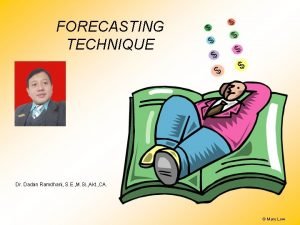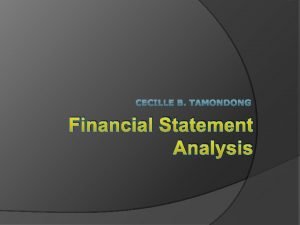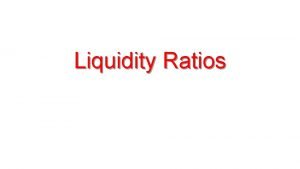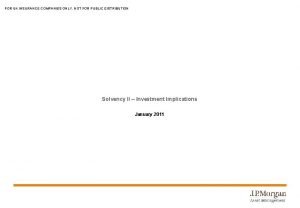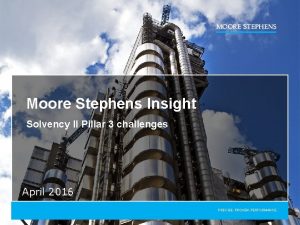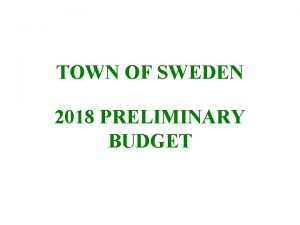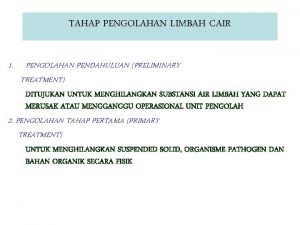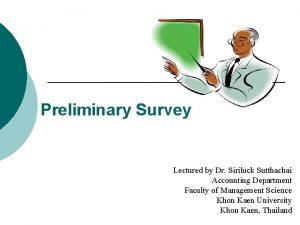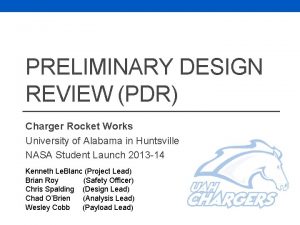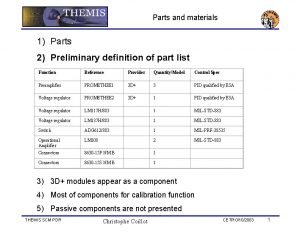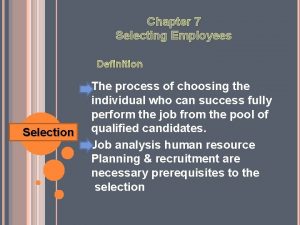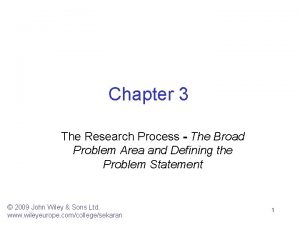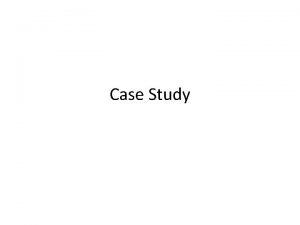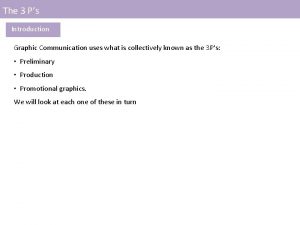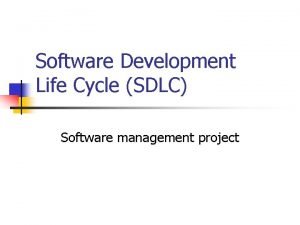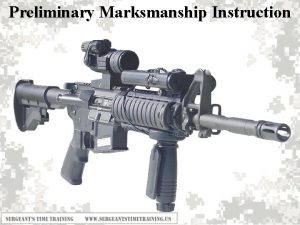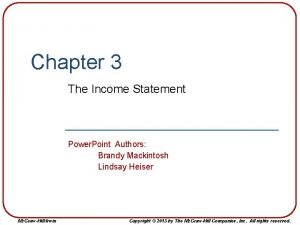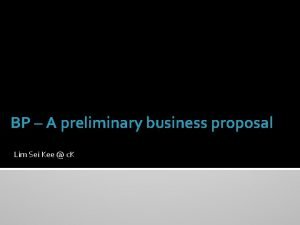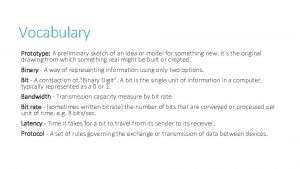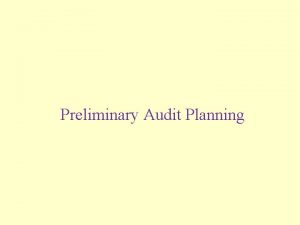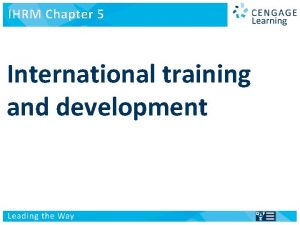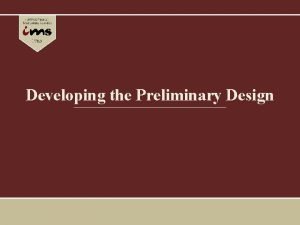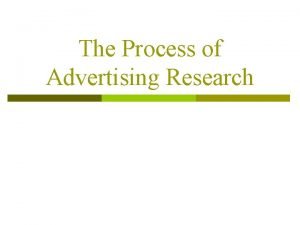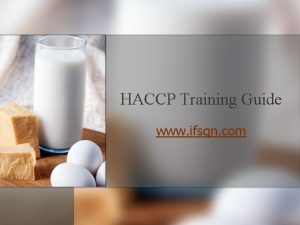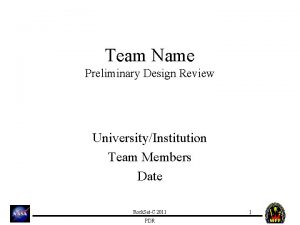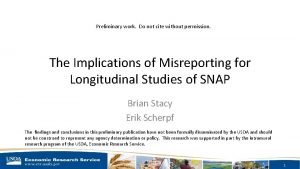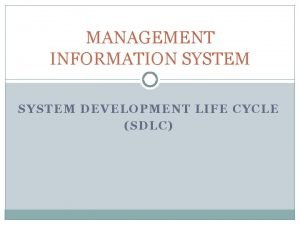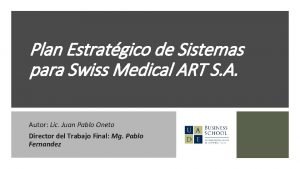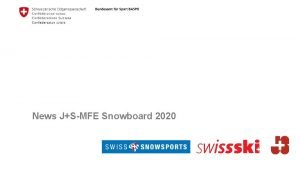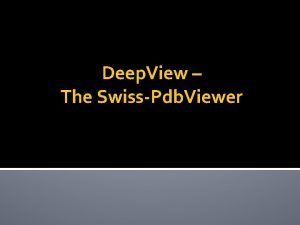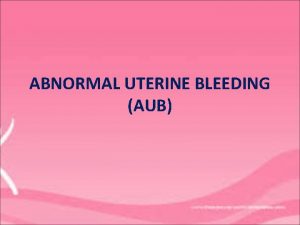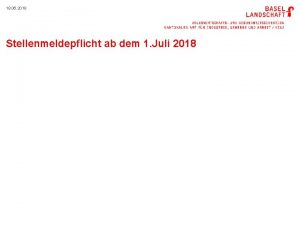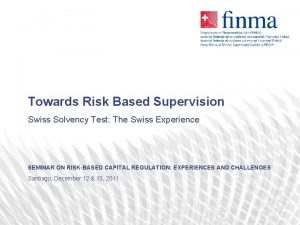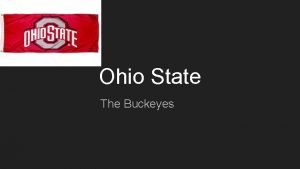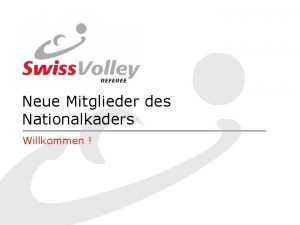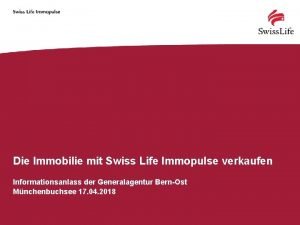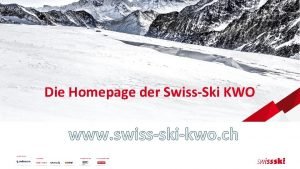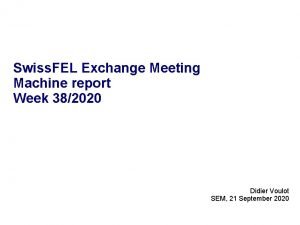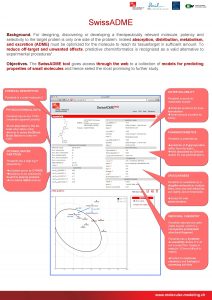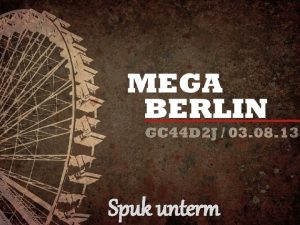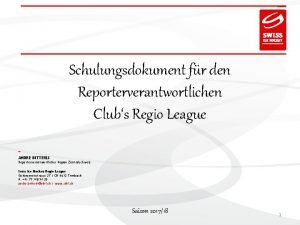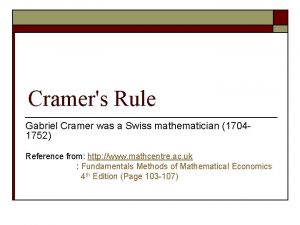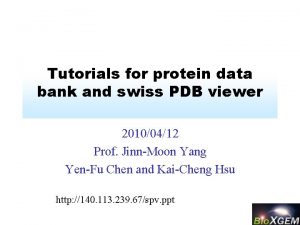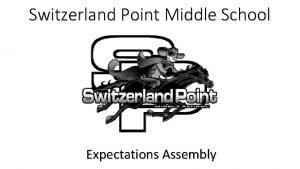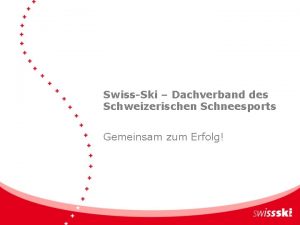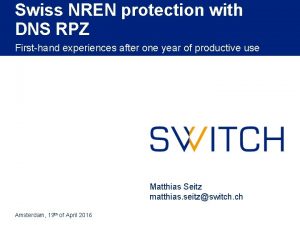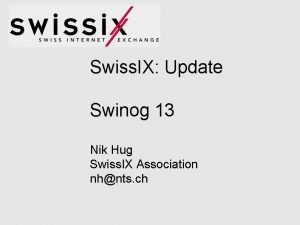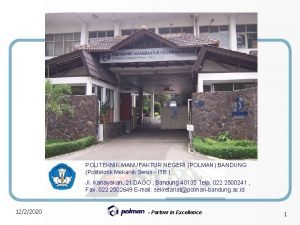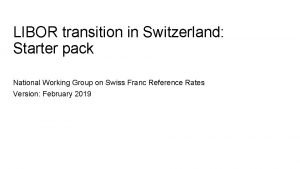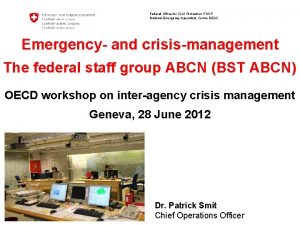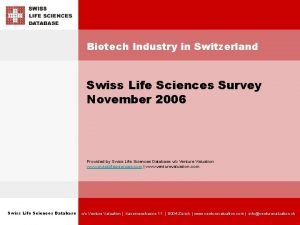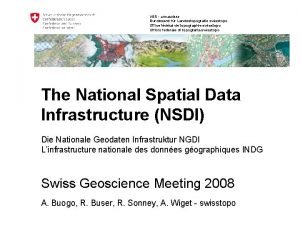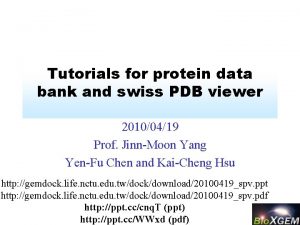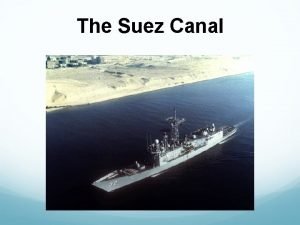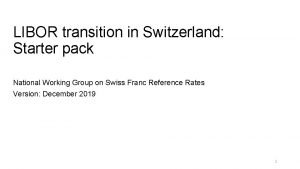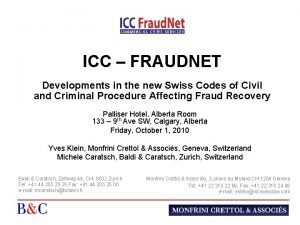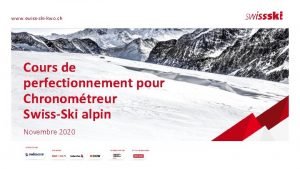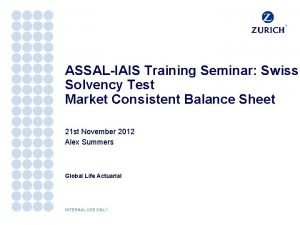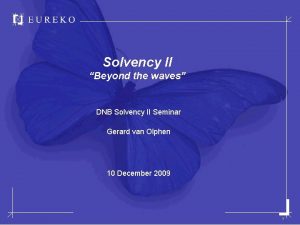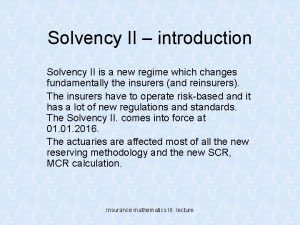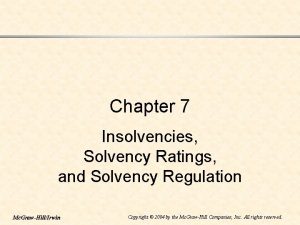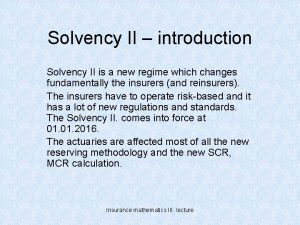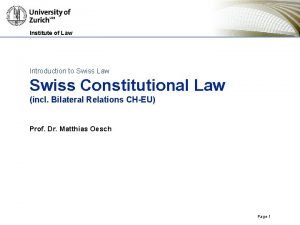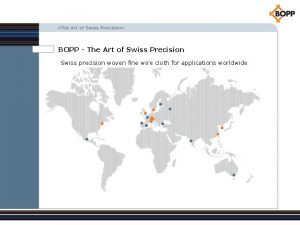Swiss Solvency Test Preliminary Analysis Field Test 2005

































![Market Value Margin / Best Estimate vs Market Value Margin / ES[RBC], based on Market Value Margin / Best Estimate vs Market Value Margin / ES[RBC], based on](https://slidetodoc.com/presentation_image_h2/d35abe8304ee883eec4da9f874ea4662/image-34.jpg)
![Market Value Margin / Best Estimate vs Market Value Margin / ES[RBC], based on Market Value Margin / Best Estimate vs Market Value Margin / ES[RBC], based on](https://slidetodoc.com/presentation_image_h2/d35abe8304ee883eec4da9f874ea4662/image-35.jpg)
![Market Value Margin Diversification vs Market Value Margin / ES[RBC], based on provisional data Market Value Margin Diversification vs Market Value Margin / ES[RBC], based on provisional data](https://slidetodoc.com/presentation_image_h2/d35abe8304ee883eec4da9f874ea4662/image-36.jpg)
![Market Value Margin Diversification vs Market Value Margin / ES[RBC], based on provisional data Market Value Margin Diversification vs Market Value Margin / ES[RBC], based on provisional data](https://slidetodoc.com/presentation_image_h2/d35abe8304ee883eec4da9f874ea4662/image-37.jpg)



































































































- Slides: 136

Swiss Solvency Test: Preliminary Analysis Field Test 2005 Philipp Keller, Federal Office of Private Insurance 10 December 2005 1

Results of Field Test 2005 The analysis is based on preliminary data from the field test 200 of the SST The data has not yet been reviewed in detail and the results are subject to change as more data will be received 2

Contents • Qualitative Results • Workload • Comparisons Solvency 1 and SST Solvency Ratio • Comparison Expected Shortfall and Va. R • Hidden Reserves, Risk Bearing Capital • Market Value Margin • Expected Returns • Diversification • Components of Target Capital • Market Risk • Scenarios • Life Sensitivities • Non Life 3

Field Test 2005 • Field test 2005: approx 15 life, 15 nonlife and 15 health insurers participated • Some companies have also include their branches into their calculations • The field test included all large and most mid-sized Swiss insurers as well as a number of smaller companies • The following statistics are based on data from approx 2/3 of field test participants • The participants of the fieldtest comprise approx. 93% of the provision in life and approx 85% of premiums in nonlife 4

Field Test 2005 • It is a challenge to stay principle-based, since explicit rules are desired by some of those who have to implement the SST • The possibility of analyzing the contributions of different risks to required capital are seen as a big advantage in particular for companies not yet using a full internal model • A risk based solvency framework entails close cooperation and communication of different sections within insurance companies • Substantial simplification are not perceived to be feasible if explanatory power of SST is to be kept • Solvency 1 (statutory view) and SST are not yet compatible Solvency 1 will have to be made more consistent so as not to send out conflicting signals • Modelling of participations and contingent risk and capital transfer solutions will be challenging • The quality of SST reports was often excellent 5

Impressions from the Industry Some have a somewhat reluctant attitude: SST will favour large companies that have already sophisticated risk-based management systems in place …’ ‘Small companies without internal model will be punished by the Standard Approach of SST…’ ‘SST may call for a complete overhaul of risk management …’ ‘Technical implementation can become a problem …’ ‘… transparency and fair values will further increase the volatility of earnings …’ ‘… complexity of internal models will allow companies to game the system …’ ‘SST leads to complexity where simplicity is required …’ ‘SST will increase the minimum Solvency level …’ We would like to thank Andreas Kull (Ernst&Young) for the permission to use this slide 6

Impressions from the Industry Some see it in a positive light: ‘…facilitates more efficient use of risk capital …‘ ‘Facilitates company wide risk culture and dialogue…’ ‘… will reward companies that have a comprehensive risk management in place…’ ‘… internal models are an excellent management tool and can be a competitive advantage…’ ‚Rating dependent premiums will gain acceptance. ‘ ‘Increased transparency in the insurance sector may reduce cost of capital for the sector as a whole…’ ‘… will lead to increased transparency in an insurer's financial strength/weakness…’ ‘… is an effective regulatory instrument to prevent insolvencies…’ We would like to thank Andreas Kull (Ernst&Young) for the permission to use this slide 7

Impressions from the Industry Implementation of the SST for small to midsized companies: „Wir haben diesen Sommer viel gelernt über unser Versicherungsgeschäft und über die Bedeutung von einzelnen Zahlen. Es gab viele Diskussionen über Kennziffern usw. welche zu einem Wissensaufbau in unserer Geschäftsführung führten und dazu beitragen werden, dass wir die Gesellschaft mit noch besseren Entscheidungsgrundlagen führen können. Die Ergebnisse aus dem SST-Testlauf nutzen wir auch für Diskussionen mit dem Verwaltungsrat (es gibt eine zusätzliche Sicht auf den Vermögensstand und den Geschäftsverlauf). Ich bin überzeugt, dass der SST die Führung von unserer Gesellschaft zukünftig unterstützen wird. Die Aufsicht lieferte uns dementsprechend ein weit ausgebautes Führungshilfsmittel. “ Comment by Martin Rastetter from the ‘Metzgerversicherung’ a small -to-midsized nonlife company with approx CHF 160 Mio tech. provisions Days of work used approximately: Initially: Internal: 40 -50 days, External: 15 -20 days Afterwards: Internal: 15 -20 days, External: 10 -15 days 8

Impressions from the Industry Implementation of the SST for large companies: "Die Winterthur Gruppe unterstützt grundsätzlich die Einführung des Swiss Solvency Test. Im Gegensatz zum heute gültigen Solvenzregime gibt der Swiss Solvency Test ein präziseres Bild über die Risikoexposition einer Versicherungsgesellschaft. Das ist im Interesse der Versicherten und der Versicherer. Das Risk Management der Winterthur arbeitet intern schon seit einigen Jahren mit vergleichbaren Risikomodellen und hat seine Erfahrungen in den SST eingebracht. Im Rahmen von Solvency II entwickelt sich in der EU ein vergleichbares Solvenzregime. Wichtig ist, dass der schweizerische Versicherungsregulator den Versicherungsgesellschaften eine angemessene Übergangsfrist bei der Erfüllung der neuen Anforderungen einräumt, und die Entwicklungen im Rahmen von Solvency II bei der weiteren Ausgestaltung des SST angemessen berücksichtigt. " Joachim Oechslin Chief Risk Officer Winterthur Group 9

Impressions from the Industry Implementation of the SST for midsized companies: “For our risk and investment strategy we need to be able to quantify the cash flow structure and the risk bearing capacity of our portfolios. For this the SST is a good (although in many aspects still to be modified and enhanced) basis. In addition, we can use the SST to test capital requirements for alternative investment strategies. As we have not yet an equally well suited internal model, the SST is for us of great benefit. We see it as an integral part within our ALM process. ” Comment by René Bühler from the “National Versicherung”, a mid-sized insurance group. Days of work used approximately: Initially: Internal: 220 days for life, 170 days for nonlife Afterwards: Internal: ~180 days for life, 150 days for nonlife 10

Field Test 2005 • Market risk is often dominating (50%-80%) • The market value margin is between 10%-40% of target capital rsp. 1%-8% of best-estimate provisions • Diversification Effect between Insurance and Market Risk: between -5% and -30% • Effect of Scenarios on ES[RBC]: Between 5% and 50% – Seems too high and some scenarios will be adjusted • ‘Market consistent value of assets / Statutory value of assets’: between 90% and 120% but in most cases market consistent value is higher than statutory • ‘Market consistent value of liabilities / Statutory value of liabilities’: between 70% and 100% – While SCR/Target Capital requirement is in many cases higher than statutory capital requirement, the economic solvency ratio can be better or worse than the statutory solvency ratio (Solvency 1), since economic capital is in most cases substantially higher than statutory capital 11

Principles vs Rules Principles work: Example: The requirement for the SST report was to send to the supervisor a report detailing the assumptions, calculations, simplifications etc. such that a knowledgeable 3 rd person can understand the result Result: The overwhelming majority of reports were of excellent quality Requiring adherence to principles often leads to better quality and better company specific results than fixed rules which tend to foster a climate where execution mainly deals with pure compliance 12

Contents • Qualitative Results • Workload • Comparisons Solvency 1 and SST Solvency Ratio • Comparison Expected Shortfall and Va. R • Hidden Reserves, Risk Bearing Capital • Market Value Margin • Expected Returns • Diversification • Components of Target Capital • Market Risk • Scenarios • Life Sensitivities • Non Life 13

Work Load Result of the Field test: Total Work Load in Person Months (PM) Split for field test on average: • 20% - 30% for internal education, communication • 30% - 40% for developing valuation methodology, preperational work (data, IT), … • 20% - 30% for actual calculation Based on initial feedback from a part of the field test participant 14

Work Load Total workload for life and nonlife companies, split into work for field test 2005 (initial) and estimates for work for SST during later years Contains modelling of branches Contains build-up of valuation methodology and software Y-axis: person days of work Company using already existing partial models X-axis: logarithmic scale for size of company (assets) Branches Life initial Life later Nonlife initial Nonlife later Small Mid-Sized Large 15

Work Load: Life Total workload for life companies, split into work for field test 2005 (initial) and estimates for work for SST during later years Contains modelling of branches Contains build-up of valuation methodology and software Y-axis: person days of work Company using already existing partial models X-axis: logarithmic scale for size of company (assets) Branches Life initial Life later Small Mid-Sized Large 16

Work Load: P&C Contains modelling of branches Total workload for nonlife companies, split into work for field test 2005 (initial) and estimates for work for SST during later years Y-axis: person days of work X-axis: logarithmic scale for size of company (assets) Nonlife initial Nonlife later Small Mid-Sized Large 17

Work Load Small companies: assets < CHF 1 bn Mid-sized companies: assets between CHF 1 bn and CHF 10 bn Large Companies: Assets > CHF 10 bn 18

Contents • Qualitative Results • Workload • Comparisons Solvency 1 and SST Solvency Ratio • Comparison Expected Shortfall and Va. R • Hidden Reserves, Risk Bearing Capital • Market Value Margin • Expected Returns • Diversification • Components of Target Capital • Market Risk • Scenarios • Life Sensitivities • Non Life 19

Solvency Ratios The following graph shows a comparison of the SST solvency ratio with the statutory solvency ratio. A value larger than 1 means that the SST solvency ratio is higher than the statutory solvency ratio. A value larger than 1 does not imply that a company does not satisfy either statutory or SST solvency but only that the SST solvency ratio is higher than statutory solvency ratio The bars denote ratios for a randomized mix of a randomized sample of life and nonlife companies of field test participants 20

Solvency Ratios The Statutory Solvency Ratio is only a weak predictor for the SST Solvency Ratio For nonlife companies, Spearman’s Rank Correlation is approx 0 and for life companies Spearman’s Rank Correlation is approx 0. 5 Nonlife Life 21

Solvency Measures The Statutory Solvency Ratio is only a weak predictor for the SST Solvency Ratio X-axis: Solvency 1 Ratio Y-axis: SST Solvency Ratio Correlation for nonlife companies: weakly negative, for life companies approx. 0. 4 22

Volatility of SST Solvency Ratio Is economic solvency more volatile than Solvency 1? Sample: Solvency 1 ratios of approx. 100 life and nonlife companies over the last 5 years • The average standard deviation of the • For 10% of the companies is the minimal solvency 1 ratio during the last 5 year less than 25% of the change of the Solvency 1 ratio over maximal solvency 1 ratio. the 5 year mean is approx 30% • 1/3 of the companies had at least one yearly change of Solvency 1 ration in excess of 50% during the last 4 years • 10% of the companies had at least two years, where the Solvency 1 ratio changed by more than 50% during the last 4 years • For approx half of the companies is the minimal Solvency 1 ratio during the last 5 year less than half of the maximal Solvency 1 ratio. Histogram of the standard deviation of the change of solvency 1 ratios around the 5 year mean 18 Results do not deviate significantly between life and nonlife companies 16 14 12 10 8 6 4 2 0 0 0. 2 0. 4 0. 6 0. 8 1 1. 2 1. 4 1. 6 23 1. 8

Contents • Qualitative Results • Workload • Comparisons Solvency 1 and SST Solvency Ratio • Comparison Expected Shortfall and Va. R • Hidden Reserves, Risk Bearing Capital • Market Value Margin • Expected Returns • Diversification • Components of Target Capital • Market Risk • Scenarios • Life Sensitivities • Non Life 24

ES vs Va. R The following graph shows for a selection of companies how much the 99% Expected Shortfall exceeds the 99. 5% Va. R. Life Insurers P&C Insurers On average, 99% Expected Shortfall is approx. 10% higher than the 99. 5% Va. R For P&C companies the average excess is 13%, for life companies approx. 9% 25

ES vs Va. R The following graph shows for a selection of companies the Value at Risk equivalent of the 99% Expected Shortfall. A value of 4*10^(-3) means that the 99% Expected Shortfall corresponds to a 99. 6% Va. R Life Insurers P&C Insurers The maximum is 99. 7% Va. R, the minimum is 99. 5% Va. R, the median is 99. 63% Va. R 26

ES vs Va. R The boxplot shows the Value at Risk equivalents of the 99% Expected Shortfall. For 3 companies, the SST risk measures corresponds to a Value at Risk on a confidence level very near 99. 5%. The maximal difference is one company where the Expected Shortfall corresponds to 99. 73%. The median Va. R equivalent is 99. 63% 0. 9955 0. 9965 0. 997 27

Contents • Qualitative Results • Workload • Comparisons Solvency 1 and SST Solvency Ratio • Comparison Expected Shortfall and Va. R • Hidden Reserves, Risk Bearing Capital • Market Value Margin • Expected Returns • Diversification • Components of Target Capital • Market Risk • Scenarios • Life Sensitivities • Non Life 28

Valuation Liabilities 1. 4 The following graph Reserves shows how market Statutory (=100%) consistent liabilities compare to statutory liabilities. Market Consistent Reserves (discounted best estimate + market value margin) In most cases, market consistent valuation releases substantial amounts of hidden reserves to risk bearing capital Life MVM Life Best Estimate Nonlife MVM Nonlife Best Estimate Health Best Estimate Life Nonlife Health 29

Valuation Assets The following graph shows how market consistent assets compare to statutory assets. Statutory Assets (=100%) Market Consistent Valued Assets In most cases, market consistent valuation releases substantial amounts of hidden reserves to risk bearing capital 100% Life 0% Nonlife Health Life Nonlife Health 30

Risk Bearing Capital The graph shows the comparison between economic risk bearing capital and Solvency 1 risk bearing capital (with oulier removal). Most companies have substantially more risk bearing capital available under an economic framework On average risk bearing capital increases by approx. a factor 2 31

Best Estimate, MVM, SCR The relationship between best estimate, market value margin and target capital The figure shows the relationship between the best estimate of liabilities, the market value margin and the 1 -year risk capital (ES) for a random selection of companies. The actual values were furthermore randomized by multiplication with a random number near 1. The relative comparison is however representative ES (1 Year Risk Capital) Market Value Margin Best Estimate 32

Contents • Qualitative Results • Workload • Comparisons Solvency 1 and SST Solvency Ratio • Comparison Expected Shortfall and Va. R • Hidden Reserves, Risk Bearing Capital • Market Value Margin • Expected Returns • Diversification • Components of Target Capital • Market Risk • Scenarios • Life Sensitivities • Non Life 33
![Market Value Margin Best Estimate vs Market Value Margin ESRBC based on Market Value Margin / Best Estimate vs Market Value Margin / ES[RBC], based on](https://slidetodoc.com/presentation_image_h2/d35abe8304ee883eec4da9f874ea4662/image-34.jpg)
Market Value Margin / Best Estimate vs Market Value Margin / ES[RBC], based on provisional data of Field Test 2005 0. 7 X-axis: MVM divided by best estimate of liabilities Y-axis: MVM divided by 1 -year risk capital (SCR) MVM / Best Estimate vs MVM / 1 -Year Risk Capital Nonlife Life 0. 6 Life companies writing predominately risk products 0. 5 0. 4 0. 3 0. 2 Life companies writing predominately savings products 0. 1 0 0 0. 01 0. 02 0. 03 0. 04 0. 05 0. 06 0. 07 0. 08 Market Value Margin / Best Estimate 34
![Market Value Margin Best Estimate vs Market Value Margin ESRBC based on Market Value Margin / Best Estimate vs Market Value Margin / ES[RBC], based on](https://slidetodoc.com/presentation_image_h2/d35abe8304ee883eec4da9f874ea4662/image-35.jpg)
Market Value Margin / Best Estimate vs Market Value Margin / ES[RBC], based on provisional data of Field Test 2005 Market Value Margin / Best Estimate vs Market Value Margin / 1 -Year Risk Capital 0. 7 0. 6 Size of markers corresponds to required 1 year risk capital X-axis: MVM divided by best estimate of liabilities Y-axis: MVM divided by 1 -year risk capital (SCR) 0. 5 0. 4 0. 3 0. 2 0. 1 0 0 0. 01 0. 02 0. 03 0. 04 0. 05 0. 06 0. 07 0. 08 Market Value Margin / Best Estimate 35
![Market Value Margin Diversification vs Market Value Margin ESRBC based on provisional data Market Value Margin Diversification vs Market Value Margin / ES[RBC], based on provisional data](https://slidetodoc.com/presentation_image_h2/d35abe8304ee883eec4da9f874ea4662/image-36.jpg)
Market Value Margin Diversification vs Market Value Margin / ES[RBC], based on provisional data of Field Test 2005 Market Value Margin without Illiquidity/ 1 -Year Risk Capital 0. 7 Nonlife Life 0. 6 0. 5 0. 4 X-axis: Diversification between insurance and market risk Y-axis: market value margin divided by 1 -year risk capital 0. 3 0. 2 0. 1 0 0 0. 05 0. 15 0. 25 0. 35 Diversification between Insurance and Market Risk 36
![Market Value Margin Diversification vs Market Value Margin ESRBC based on provisional data Market Value Margin Diversification vs Market Value Margin / ES[RBC], based on provisional data](https://slidetodoc.com/presentation_image_h2/d35abe8304ee883eec4da9f874ea4662/image-37.jpg)
Market Value Margin Diversification vs Market Value Margin / ES[RBC], based on provisional data of Field Test 2005 Market Value Margin 0/ 1 -Year Risk Capital 0. 7 0. 6 Size of markers corresponds to required 1 year risk capital X-axis: Diversification between insurance and market risk Y-axis: market value margin divided by 1 -year risk capital 0. 5 0. 4 0. 3 0. 2 0. 1 0 0 0. 05 0. 15 0. 25 0. 35 Diversification between Insurance and Market Risk 37

MVM: Effect of Illiquidity of Assets The following graph shows a comparison of the actual market value margins which include the effect of illiquidity of assets with (theoretical) market value margins where assets are assumed to be completely liquid and where convergence to the optimal replicating asset portfolio were instantaneous For some companies a substantial reduction of the MVM could be achieved by going over to a more liquid asset portfolio Diversification vs Market Value Margin / ES[RBC], based on provisional data of Field Test 2005 Effective Market Value Margin due to insurance risk only Overall, the illiquidity of assets increases the MVM by approx. 25% 38

MVM: Effect of Illiquidity of Assets The following graph shows the market value margin based purely on insurance risk. The size of the markers depends on the amount of required 1 -year risk capital X-axis: MVM divided by best estimate of liabilities Y-axis: MVM divided by 1 -year risk capital Market Value Margin 0 / Best Estimate vs Market Value Margin / 1 -Year Risk Capital 0. 7 0. 6 0. 5 0. 4 0. 3 0. 2 0. 1 0 0 0. 005 0. 015 0. 025 0. 035 0. 045 0. 05 Market Value Margin 0 / Best Estimate 39

MVM: Effect of Illiquidity of Assets The following graph shows the market value margin based purely on insurance risk. The size of the markers depends on the amount of required 1 -year risk capital X-axis: Diversification between insurance and market risk Y-axis: market value margin divided by 1 -year risk capital Market Value Margin 0/ 1 -Year Risk Capital 0. 7 0. 6 0. 5 0. 4 0. 3 0. 2 0. 1 0 0 0. 05 0. 15 0. 25 0. 35 Diversification between Insurance and Market Risk 40

MVM vs ES The graph shows a comparison of the MVM and expected shortfall due to insurance risk. The expected shortfall has a confidence level of 99%. Expected Shortfall MVM Life Insurers P&C Insurers 41

MVM without Liquidity vs ES The graph shows a comparison of the MVM without liquidity and expected shortfall due to insurance risk. The expected shortfall has a confidence level of 99%. Expected Shortfall MVM Life Insurers P&C Insurers 42

MVM vs ES: Nonlife The graph shows a comparison of the MVM and expected shortfall due to insurance risk for nonlife companies. The expected shortfall has a confidence level of 99%. The robust linear fit between ES and the MVM is: MVM=CHF 4. 4 Mio + 0. 267*ES The linear correlation is 0. 711 43

MVM without Liquidity vs ES: Nonlife The graph shows a comparison of the MVM and expected shortfall due to insurance risk for nonlife companies. The expected shortfall has a confidence level of 99%. The robust linear fit between ES and the MVM is: MVM=- CHF 2. 6 Mio + 0. 383*ES The linear correlation is 0. 8 44

MVM vs ES: Life The graph shows a comparison of the MVM and expected shortfall due to insurance risk for life companies. The expected shortfall has a confidence level of 99%. The robust linear fit between ES and the MVM is: MVM=CHF 15. 6 Mio + 0. 848*ES The linear correlation is 0. 985 45

MVM without Liquidity vs ES: Life The graph shows a comparison of the MVM and expected shortfall due to insurance risk for life companies. The expected shortfall has a confidence level of 99%. The robust linear fit between ES and the MVM is: MVM=- CHF 0. 3 Mio + 0. 771*ES The linear correlation is 0. 984 46

Contents • Qualitative Results • Workload • Comparisons Solvency 1 and SST Solvency Ratio • Comparison Expected Shortfall and Va. R • Hidden Reserves, Risk Bearing Capital • Market Value Margin • Expected Returns • Diversification • Components of Target Capital • Market Risk • Scenarios • Life Sensitivities • Non Life 47

Expected Returns Effect on the SST solvency ratio of expected financial and technical result during the current year The y-axis shows the SST solvency ratio without taking into account expected results divided by the SST solvency ratio with expected result For life company the average ratio is 95%, for nonlife companies 88%, for health companies 90% For life company the median ratio is 98%, for nonlife companies 90%, for health companies 92% Life Insurers P&C Insurers Health Insurers 48

Expected Returns Expected financial results divided by the market value of total assets Life Insurers P&C Insurers Health Insurers 49

Expected Returns Expected shortfall of financial market risk vs expected financial result Life Insurers P&C Insurers Health Insurers 50

Expected Returns Ratio of Expected Financial Result divided by Expected Shortfall of Financial Market Risk Life Insurers P&C Insurers Health Insurers 51

Expected Returns Expected shortfall of insurance risk vs expected technical result Life Insurers P&C Insurers Health Insurers 52

Expected Returns Ratio of Expected Insurance Result divided by Expected Shortfall of Insurance Risk Life Insurers P&C Insurers Health Insurers 53

Expected Returns Expected shortfall of insurance and market risk vs expected financial + technical result Life Insurers P&C Insurers Health Insurers 54

Expected Returns Ratio of Expected Insurance + Financial Market Result divided by Expected Shortfall of Insurance and Market Risk Life Insurers P&C Insurers Health Insurers 55

Expected Returns X-Axis: Expected Technical Result divided by Expected Shortfall of Insurance Risk Y-Axis: Expected Financial Result divided by Expected Shortfall of Market Risk Life Insurers P&C Insurers Health Insurers 56

Expected Returns X-Axis: Expected Technical Result divided by Market Value of Assets Y-Axis: Expected Financial Result divided by Market Value of Assets Life Insurers P&C Insurers Health Insurers 57

Contents • Qualitative Results • Workload • Comparisons Solvency 1 and SST Solvency Ratio • Comparison Expected Shortfall and Va. R • Hidden Reserves, Risk Bearing Capital • Market Value Margin • Expected Returns • Diversification • Components of Target Capital • Market Risk • Scenarios • Life Sensitivities • Non Life 58

Diversification between Market and Insurance Risk 100% The figure shows the 1 year risk capital due to market and insurance risk (normalized with total 1 year capital requirement) and diversification Nonlife Insurance Risk Nonlife Market Estimate 0 Life Insurance Risk Life Market Risk -30% Diversification Nonlife Life 59

Diversification between Market and Insurance Risk The figure shows the 1 year risk capital due to market and insurance risk (normalized with total 1 year capital requirement) and diversification 60

Diversification between Market and Insurance Risk The figure shows the 1 year risk capital due to market and insurance risk (normalized with total 1 year capital requirement) and diversification 61

Diversification between Market and Insurance Risk The figure shows the 1 year risk capital due to market and insurance risk (normalized with total 1 year capital requirement) and diversification 62

Diversification: Market Risk Diversification between different market risk factors: 63

Contents • Qualitative Results • Workload • Comparisons Solvency 1 and SST Solvency Ratio • Comparison Expected Shortfall and Va. R • Hidden Reserves, Risk Bearing Capital • Market Value Margin • Expected Returns • Diversification • Components of Target Capital • Market Risk • Scenarios • Life Sensitivities • Non Life 64

Components of Target Capital The boxplots show the different components of target capital differ between companies. MVM Credit Risk Nonlife Scenarios The x-axis shows the value of the components divided by the 1 year risk capital Market Risk Insurance Risk -0. 2 0 0. 2 0. 4 0. 6 0. 8 1 1. 2 MVM Credit Risk Life Scenarios Market Risk Insurance Risk MVM Credit Risk Health Scenarios Market Risk Insurance Risk 65

Components of Target Capital: Life Components of Target Capital for Life Companies: Diversification between market and insurance risk 1 year risk capital Target capital Credit Risk: In the standard model add-on based on Basel II, but portfolio models can be used Market risk, taking into account diversification between different asset classes MVM Expected technical result Effect of scenarios Expected financial result Insurance Risk, taking into account diversification between risk factors and lines of business and branches Relative length of bars correspond approximately to actual average values 66

Components of Target Capital: Life Components of Target Capital for Life Companies: Relative length of bars correspond approximately to actual median values 67

Components of Target Capital: Life Risk Components of Target Capital for Life Companies writing Target predominantly risk products: capital Diversification between market and insurance risk 1 year risk capital Credit Risk Market risk Expected technical result MVM Expected financial result Effect of scenarios Insurance Risk Relative length of bars correspond approximately to actual average values 68

Components of Target Capital: Life Risk Components of Target Capital for Life Companies writing predominantly risk products: Relative length of bars correspond approximately to actual median values 69

Components of Target Capital: Life Savings Components of Target Capital for Life Companies writing predominantly savings products: 1 year Target Diversification between market and insurance risk Market risk Effect of scenarios Expected technical result Expected financial result risk capital MVM Credit Risk Insurance Risk Relative length of bars correspond approximately to actual average values 70

Components of Target Capital: Life Savings Components of Target Capital for Life Companies writing predominantly savings products: Relative length of bars correspond approximately to actual median values 71

Components of Target Capital: Life Random selection of four life companies 72

Components of Target Capital: P&C Components of Target Capital for P&C Companies: Target capital 1 year Diversification risk between market and insurance risk Credit capital Risk MVM Market risk Expected technical result Effect of scenarios Expected financial result Insurance Risk Relative length of bars correspond approximately to actual average values 73

Components of Target Capital: P&C Components of Target Capital for P&C Companies: Relative length of bars correspond approximately to actual median values 74

Components of Target Capital: Small P&C Components of Target Capital for Small P&C Companies: Diversification between market and insurance risk Market risk 1 year risk capital Target capital Credit Risk Expected technical result MVM Effect of scenarios Expected financial result Insurance Risk Relative length of bars correspond approximately to actual average values 75

Components of Target Capital: Small P&C Components of Target Capital for Small P&C Companies: Relative length of bars correspond approximately to actual median values 76

Components of Target Capital: Nonlife Random selection of four nonlife companies 77

Components of Target Capital: Health Components of Target Capital for Health Companies: Diversification between market and insurance risk 1 year risk capital Effect of scenarios Market risk Target capital Credit Risk MVM Expected technical result Expected financial result Insurance Risk Relative length of bars correspond approximately to actual average values 78

Components of Target Capital: Health Components of Target Capital for Health Companies: Relative length of bars correspond approximately to actual median values 79

Contents • Qualitative Results • Workload • Comparisons Solvency 1 and SST Solvency Ratio • Comparison Expected Shortfall and Va. R • Hidden Reserves, Risk Bearing Capital • Market Value Margin • Expected Returns • Diversification • Components of Target Capital • Market Risk • Scenarios • Life Sensitivities • Non Life 80

Market Risk Diversification effect between different asset classes Others Real Estate Diversification between market risk factors Diversification between Market and Insurance Risks Credit Risk 1 year risk capital Shares Scenarios Spreads MVM Market risk Expected Result FX Insurance Risk Market risk Interest Rates (CHF, EUR, USD, GBP) Relative length of bars correspond approximately to actual median values 81 Target capital

Market Risk P&C Diversification Participations Private Equity Hedge Funds Real Estate Shares FX interest rates Spreads GBP USD EUR CHF The figure shows the average contributions to market risks of the different risk factors, measured by Expected Shortfall for nonlife companies. Required Risk Capital for Market Risk 1. 4 82

Market Risk Life Diversification Participations Private Equity Hedge Funds Real Estate Shares FX interest rates Spreads GBP USD EUR CHF The figure shows the average contributions to market risks of the different risk factors, measured by Expected Shortfall for life companies. Required Risk Capital for Market Risk 1. 4 83

Diversification Participations Private Equity Hedge Funds Real Estate Shares FX interest rates Spreads GBP USD EUR CHF The figure shows the average contributions to market risks of the different risk factors, measured by Expected Shortfall for health companies. Required Risk Capital for Market Risk Health 84

Market Risk Contributions to market risk of different risk factors: Life Others Nonlife Real Estate Shares FX Spreads Interest Rates (CHF, EUR, USD, GBP) 85

Market Risk Sensitivity of market risk to the correlation matrix. The first graph shows calculations using standard correlation matrix between market risk factors. The second figure shows a correlation matrix where correlations are always rounded to the next highest multiple of 0. 25 86

Results of Field Tests: Sensitivities Relative influence of stand-alone market risk factors: • Interest rates (CHF, EUR, USD, GBP) • Spreads • FX • Shares • Real Estate • Others Shown are standard deviations (in arbitrary units) Correlations between above risk factors not taken into account 87

Contents • Qualitative Results • Workload • Comparisons Solvency 1 and SST Solvency Ratio • Comparison Expected Shortfall and Va. R • Hidden Reserves, Risk Bearing Capital • Market Value Margin • Expected Returns • Diversification • Components of Target Capital • Market Risk • Scenarios • Life Sensitivities • Non Life 88

Scenarios: Effect of Scenarios Expressed as Fraction of RBC 1: Equity Drop -50% 2: Real Estate Crash 1987 3: Crash 1987* 4: Nikkei Crash 1990* 5: European FX Crisis 1992 6: US i. r. crisis 1992 7: Russia Crisis/LTCM 1998 8: Crash 2000/2001 9: Global Deflation 10: Longevity * Scenarios likely need to be adjusted as effect seems too high Effect of Scenarios in Relation to Risk Bearing Capital 2 Loss under Scenario / Risk Bearing Capital Historical Scenarios defined via simultaneous stresses of risk factors. Scenarios are calculated automatically within spread-sheet 1. 5 1 0. 5 0 -0. 5 1 2 3 4 5 6 Scenario 7 8 9 10 89

Scenarios: Pandemic Effect of Pandemic Scenario Expressed as Fraction of RBC One outlier where the effect of the Pandmic scenario was the loss of 3 times risk bearing capital was removed Life Insurers P&C Insurers Health Insurers 90

Scenarios: Historical Market Risk Effect of historical market risk scenarios expressed as fraction of RBC 91

Scenarios: Historical Market Risk Effect of Historical Market Risk Scenarios Expressed as Fraction of RBC All historical market risk scenarios are added and weighted with their probability (P=0. 001). The evaluated loss is expressed as fraction of the risk bearing capital Life Insurers P&C Insurers Health Insurers 92

Scenarios: General Effect of general scenarios expressed as fraction of RBC The following scenarios had to be calculated by all companies and are not specific to life, P&C or health insurers 93

Scenarios: General Probability Weighted Effect of general scenarios expressed as fraction of RBC, weighted with probability of occurrence The following scenarios had to be calculated by all companies and are not specific to life, P&C or health insurers 94

Scenarios: Life Effect of life insurance specific scenarios expressed as fraction of RBC 95

Scenarios: Life Probability Weighted Effect of life insurance specific scenarios expressed as fraction of RBC, weighted with probability of occurrence 96

Scenarios: Nonlife Effect of e nonlife insurance specific scenarios expressed as fraction of RBC 97

Scenarios: Nonlife Probability Weighted Effect of nonlife insurance specific scenarios expressed as fraction of RBC, weighted with probability of occurrence 98

Scenarios: Health Effect of health insurance specific scenarios expressed as fraction of RBC 99

Scenarios: Health Probability Weighted Effect of health insurance specific scenarios expressed as fraction of RBC, weighted with probability of occurrence 100

Scenarios: Default of Reinsurers To model the effect of the default of reinsurers on the capital requirement for cedants within a simple regulatory model is a hard problem Effect of Reinsurance Scenarios in Relation to Risk Bearing Capital Assumption for the SST Standard Model: • All reinsurers default together • The probability of this event is given by the default probability of the reinsurer to which most business is ceded 1 0. 8 0. 6 -> The loss at default is too conservative and the probability of event is likely to low 0. 4 0. 2 If a company wants a more risk-specific modelling of the effect of the default of a reinsurer, an 0 internal model has to be used Effect of Scenario as Fraction of RBC 101

Scenarios: Default of Reinsurers Under the scenario a company has to quantify the risk that: • Loss of expected payments of a reinsurer for already incurred claims • Loss due to the default of a reinsurer simultaneously with a large claim The loss under the scenario is equal to: • The maximum of • Expected Shortfall of the large claim distributions gross less Expected Shortfall of the large claims distribution net • Scenario 1 (gross) less Scenario 1 (net) • … • Scenario n (gross) less Scenario n (net) Takes into account the risk that the reinsurer defaults simultaneously with a large claim Takes into account the risk that the reinsurer defaults simultaneously with a catastrophe • + Reinsurance premium for XL for normal claims Loss of reinsurance premium • + Claim reserves (gross) less Claim reserves (net) Takes into account the risk of loss of future payments from a reinsurer for already incurred claims Probability of the scenario: Default probability of the reinsurer to which most business is ceded (according to premium) 102

Scenarios: Default of Reinsurers Effect of credit risk of reinsurers on capital requirements: • Adds between 0. 02% and 8% to required capital depending on business ceded and reinsurers default probability (using Expected Shortfall) • If Va. R is used as risk measure for capital requirements, the effect of the credit risk of reinsurers is between 0. 02% and 3. 5%. 103

Scenarios: Company Specific A number of companies defined company specific scenarios for the field test 2005 Market Risk Scenarios Insurance Risk Scenarios • Real Estate (2): increase in i. r. by 100 • Epidemics (2): BSE or others, global bp, decrease in value of real estate, increase in mortality and morbidity P=0. 1% for all ages also in future, P=5% • Asia Crisis 1997/1998: P=0. 1% • Nuclear Catastrophes (2): P=0. 1% and P=0. 5% • Inflation: global decrease in i. r. , annuity option = 80%, administration • Storm Lothar, P=0. 5% cost = +25%, P=0. 1% • Earthquake Basel • CHF Appreciation vs. EUR, USD, GBP, • Fire in Old City JPY of 25%, P=0. 1% • Lapsation Scenario: Increas in i. r. , increase in lapse for actives, P=0. 5% 104

Scenarios: Company Specific Asia Crisis 0. 2 Fraction of Risk Bearing Capital Lost The boxplot shows the effect of company specific scenarios expressed of the fraction of risk bearing capital lost if the scenario were to occur 0 -0. 2 Nuclear Cat Real Estate Crisis Inflation CHF Apprec. Epidemic Storm Lothar Spread Widening Mortage -0. 4 -0. 6 -0. 8 Lapse Epidemic BSE 105

Contents • Qualitative Results • Workload • Comparisons Solvency 1 and SST Solvency Ratio • Comparison Expected Shortfall and Va. R • Hidden Reserves, Risk Bearing Capital • Market Value Margin • Expected Returns • Diversification • Components of Target Capital • Market Risk • Scenarios • Life Sensitivities • Non Life 106

Option Exercise Lapse Reactivation Morbidity Longevity Mortality Option Exercise Lapse Reactivation Morbidity Longevity Sensitivities of life companies to different insurance risk factors, expressed as fraction of risk bearing capital (normalized with the volatility of risk factors) Mortality Results of Field Tests: Sensitivities Individual Business Group Business Example shows 4 different life companies 107

Results of Field Tests: Life Sensitivities Average ES of Individual Business The figure shows the average contributions to individual life insurance risks of the different risk factors , measured by Expected Shortfall. Longevity Mortality Reactivation Disability Lapse Option Exercise Required Risk Capital Diversification 108

Results of Field Tests: Life Sensitivities Average ES of Individual Business The figure shows the average contributions to individual life insurance risks of the different risk factors, measured by Expected Shortfall. Average take over all Expected Shortfalls > 0 Longevity Mortality Reactivation Disability Lapse Option Exercise Required Risk Capital Diversification 109

Results of Field Tests: Life Sensitivities Average ES of Group Life Business The figure shows the average contributions to group life insurance risks of the different risk factors, measured by Expected Shortfall. Longevity Mortality Reactivation Disability Lapse Option Exercise Required Risk Capital Diversification 110

Results of Field Tests: Life Sensitivities The figure shows the average contributions to total (individual and group) life insurance risks of the different risk factors, measured by Expected Shortfall. Average ES of BVG + Individual Business Longevity Mortality Reactivation Disability Lapse Option Exercise Required Risk Capital Diversification 111

Option Exercise Lapse Reactivation Morbidity Longevity Mortality Option Exercise Lapse Reactivation Morbidity Longevity The figure shows the stand alone capital requirements for the life insurance risk factors and the diversification effect Mortality Results of Field Tests: Life Sensitivities Diversification within Group Pension Diversification between Individual and Group Pension Diversification within Life Individual 112

Results of Field Tests: Life Sensitivities The figure shows the effect of changing the correlation between morbidity and reactivation from 0 to 1. Capital requirements due to life insurance risk increase (on average) by 10% Correlation 0 Correlation 1 Morbidity is relatively dominant due to the fact that an increase in morbidity is negative for all companies while other risk factors can be positive or negative, depending on the business model 113

Results of Field Tests: Life Sensitivities Composition of life insurance capital requirement for four randomly selected companies showing diversification within individual and group business and between individual and group business 114

Results of Field Tests: Life Sensitivities Option Exercise Lapse Reactivation Morbidity Longevity Mortality Sensitivities w. r. t. life insurance risk factors expressed as volatility weighted sensitivity divided by total insurance risk capital requirement for four randomly selected life companies 115

Results of Field Tests: Life Sensitivities Option Exercise Lapse Reactivation Morbidity Longevity Mortality Unweighted average sensitivities w. r. t. life insurance risk factors expressed as volatility weighted sensitivity divided by total insurance risk capital requirement 116

Contents • Qualitative Results • Workload • Comparisons Solvency 1 and SST Solvency Ratio • Comparison Expected Shortfall and Va. R • Hidden Reserves, Risk Bearing Capital • Market Value Margin • Expected Returns • Diversification • Components of Target Capital • Market Risk • Scenarios • Life Sensitivities • Non Life 117

Results of Field Tests: Large Claims Distribution of large claims for some nonlife companies 0 10 -1 10 -2 10 -3 1 -F(x) 10 -4 10 -5 10 -6 10 -7 10 -8 10 -1 10 0 10 1 10 2 10 Large Claims (Mio. CHF) 3 4 10 10 118

Results of Field Tests: Nonlife Risks Approximate comparison of effects of run off risks, normal claims, large claims and diversification. For the graph, risks were assumed to be independent and comparison is based on expected shortfall Large Claims Normal Claims Run off Risks Diversification For some companies where data on large claims was missing, capital requirement data for large claims was generated by assuming that large are normally distributed and using the square root formula to calculate the standard deviation 119

Results of Field Tests: Nonlife Risks Approximate comparison of average effects of run off risks, normal claims, large claims and diversification. For the graph, risks were assumed to be independent and comparison is based on expected shortfall Large Claims Normal Claims Run off Risks Diversification Required Capital for Nonlife Insurance Risk 120

Standardabweichung / Erwartungswert Runoff Risk: Standard-Deviation per Lo. B 121

Results of Field Tests: Run-off Risks (P&C) Split between parameter 1 and stochastic risk for normal claims for a 0. 9 selection of participants 0. 8 0. 7 0. 6 0. 5 0. 4 0. 3 0. 2 Parameter Risk Stochastic Risk 0. 1 0 122

Run-off Patterns (P&C) Nonlife Modified Duration Years Life Years 123

Run-off Patterns (P&C): MFH The graph shows the run-off pattern for MFH business (3 rd party liability car insurance). The boxplots show the variability of the assumptions for different development years The y-axis is logarithmic 124

Run-off Patterns (P&C): Credit and Surety The graph shows the run-off pattern for credit & surety business The boxplots show the variability of the assumptions for different development years The y-axis is logarithmic 125

Run-off Patterns (P&C): Transport The graph shows the run-off pattern for transport business The boxplots show the variability of the assumptions for different development years The y-axis is logarithmic 126

Run-off Patterns (P&C): Individual Health The graph shows the run-off pattern for individual health business The boxplots show the variability of the assumptions for different development years The y-axis is logarithmic 127

Run-off Patterns (P&C): Group Health The graph shows the run-off pattern for group health business The boxplots show the variability of the assumptions for different development years The y-axis is logarithmic 128

Run-off Patterns (P&C): UVG The graph shows the run-off pattern for UVG business (work related accident). The boxplots show the variability of the assumptions for different development years The y-axis is logarithmic 129

Run-off Patterns (P&C): Liability The graph shows the run-off pattern for MFH business (3 rd party liability car insurance). The boxplots show the variability of the assumptions for different development years The y-axis is logarithmic 130

Run-off Patterns (P&C): Property The graph shows the run-off pattern for property business The boxplots show the variability of the assumptions for different development years The y-axis is logarithmic 131

Run-off Patterns (P&C): MFK The graph shows the run-off pattern for MFK business (car accident). The boxplots show the variability of the assumptions for different development years The y-axis is logarithmic 132

Run-off Patterns (P&C): Other Business The graph shows the run-off pattern for other business The boxplots show the variability of the assumptions for different development years The y-axis is logarithmic 133

Macauly-Duration of NL Payout Patterns 134

Average Claim Size per NL Line of Business Average claim size per Line of Business on a logarithmic scale 135

Risks in Attritional Claims Relative standard deviation of attritional (~normal/small) claims per line of business. Variationskoeffizient der Kleinschäden 0. 4 0. 3 0. 2 0. 1 0 MFH MFK Sach Haft UVG U. o. UVG Kkra EKra Line of Business Trans Luft F&K Andere Total 136
 Swiss solvency test
Swiss solvency test Who invented field hockey
Who invented field hockey Markus graf eishockey
Markus graf eishockey Swiss field hockey
Swiss field hockey Single flat wrap
Single flat wrap Pre softening milady
Pre softening milady Preliminary test
Preliminary test Liquidity solvency and profitability ratios
Liquidity solvency and profitability ratios Solvency 2 pillar 3
Solvency 2 pillar 3 Earnings per share ratio analysis
Earnings per share ratio analysis Solvency ratio accounting
Solvency ratio accounting Dampener eiopa
Dampener eiopa Liquidity profitability and solvency
Liquidity profitability and solvency Liquidity profitability and solvency
Liquidity profitability and solvency Solvency definition debate
Solvency definition debate Solvency ii rsr reporting
Solvency ii rsr reporting Dr ramdhani
Dr ramdhani Solvency investopedia
Solvency investopedia Risk margin solvency ii
Risk margin solvency ii Solvency ii
Solvency ii What are the 3 liquidity ratios?
What are the 3 liquidity ratios? Solvency ii ppt
Solvency ii ppt Allianz solvency ii
Allianz solvency ii Solvency ii pillar 3 reporting templates
Solvency ii pillar 3 reporting templates Microsoft sql server 2005 analysis services
Microsoft sql server 2005 analysis services Gauss law of magnetism
Gauss law of magnetism Individual differences factors
Individual differences factors Field dependent vs field independent
Field dependent vs field independent Q factor of capacitor
Q factor of capacitor E field h field
E field h field Data types and field properties
Data types and field properties Field dependent definition
Field dependent definition Difference between electric field and magnetic field
Difference between electric field and magnetic field Preliminary budget
Preliminary budget Preliminary treatment adalah
Preliminary treatment adalah Preliminary survey
Preliminary survey P 波
P 波 Preliminary design review example
Preliminary design review example Parts of preliminaries
Parts of preliminaries Mla rough draft example
Mla rough draft example Preliminary interview
Preliminary interview Broad problem area adalah
Broad problem area adalah Dodero company produces a single product
Dodero company produces a single product Halimbawa ng fly leaf 1
Halimbawa ng fly leaf 1 Preliminary graphics
Preliminary graphics Sdlc
Sdlc Preliminary thesis examples
Preliminary thesis examples Preliminary rifle instruction
Preliminary rifle instruction Arrt preliminary score change
Arrt preliminary score change Image development strategies art
Image development strategies art A preliminary synopsis of a film's action is called a
A preliminary synopsis of a film's action is called a Determine junktrader’s preliminary net income.
Determine junktrader’s preliminary net income. Preliminary business plan
Preliminary business plan Preliminary prototype
Preliminary prototype Preliminary audit
Preliminary audit Preliminary outline
Preliminary outline Shower approach
Shower approach Ihrm training and development
Ihrm training and development Preliminary objectives
Preliminary objectives Process of advertising research
Process of advertising research Preliminary statement definition
Preliminary statement definition ñporo
ñporo Preliminary materiality
Preliminary materiality Preliminary steps of haccp
Preliminary steps of haccp Preliminary marketing plan
Preliminary marketing plan Pdr preliminary design review
Pdr preliminary design review Situational analysis pdhpe
Situational analysis pdhpe Thesis statement formula
Thesis statement formula Preliminary ruling
Preliminary ruling Preliminary design review example
Preliminary design review example Recruitment introduction
Recruitment introduction Preliminary works cited
Preliminary works cited Preliminary research
Preliminary research Reading part 6 pet 2020
Reading part 6 pet 2020 Preliminary results example
Preliminary results example Preliminary cooking and flavoring
Preliminary cooking and flavoring Sdlc introduction
Sdlc introduction Preliminary assessment
Preliminary assessment Preliminary outline speech
Preliminary outline speech Swiss medical plan sb02
Swiss medical plan sb02 Swiss knife vs. radio
Swiss knife vs. radio Swiss medical art
Swiss medical art Swiss snow happening 2023
Swiss snow happening 2023 Gaya desain grafis
Gaya desain grafis Daniel bernoulli kimdir
Daniel bernoulli kimdir Three swiss witches
Three swiss witches Deepview swiss pdb viewer
Deepview swiss pdb viewer Jung swiss psychologist
Jung swiss psychologist Halban disease irregular shedding
Halban disease irregular shedding Swiss pdb viewer tutorial
Swiss pdb viewer tutorial Kiga pratteln offene stellen
Kiga pratteln offene stellen Swiss international style
Swiss international style Swiss sheet model
Swiss sheet model Swiss snowsports
Swiss snowsports Swiss post international
Swiss post international Swiss gear luggage
Swiss gear luggage Swiss miss mascot
Swiss miss mascot Cyrill bühlmann
Cyrill bühlmann Switched witches
Switched witches Hose brandmeister network scan
Hose brandmeister network scan Swisslife immopulse
Swisslife immopulse Swiss ski kwo
Swiss ski kwo Swiss meteo
Swiss meteo Switzerland point middle school dress code
Switzerland point middle school dress code Swiss fel
Swiss fel Adme
Adme Geocaching statistik tool
Geocaching statistik tool Sihf reporter
Sihf reporter Invisible meaning in pragmatics
Invisible meaning in pragmatics Nostalgia carol ann duffy poem
Nostalgia carol ann duffy poem Structuralism swiss
Structuralism swiss Lorenz isler
Lorenz isler Langue and parole
Langue and parole Führungscredo
Führungscredo Cramer’s rule was discovered by swiss mathematician
Cramer’s rule was discovered by swiss mathematician Swiss pdb viewer download
Swiss pdb viewer download Switzerland point middle school dress code
Switzerland point middle school dress code Swiss-ski geschäftsleitung
Swiss-ski geschäftsleitung Swiss dns
Swiss dns Swiss ix
Swiss ix Swiss excellence scholarship
Swiss excellence scholarship Politeknik mekanik swiss itb
Politeknik mekanik swiss itb Lie on a hockey stick
Lie on a hockey stick Switzerland starter pack
Switzerland starter pack Swiss protection
Swiss protection Swiss life sciences
Swiss life sciences Swiss vbs
Swiss vbs Swiss pdb viewer ppt
Swiss pdb viewer ppt The very hungry caterpillar swiss cheese
The very hungry caterpillar swiss cheese Suez canal importance
Suez canal importance Swiss ice hockey association
Swiss ice hockey association Swiss ice hockey federation
Swiss ice hockey federation Theory of probability is applied to in surveying
Theory of probability is applied to in surveying Pfadi swiss
Pfadi swiss National working group on swiss franc reference rates
National working group on swiss franc reference rates Icc fraudnet
Icc fraudnet Swiss ski kwo
Swiss ski kwo
